Google Cloud’s Retail Customer Drive Takes Aim At AWS
‘It’s one of our largest and fastest-growing industries,’ says Carrie Tharp, Google Cloud’s vice president of retail and consumer.
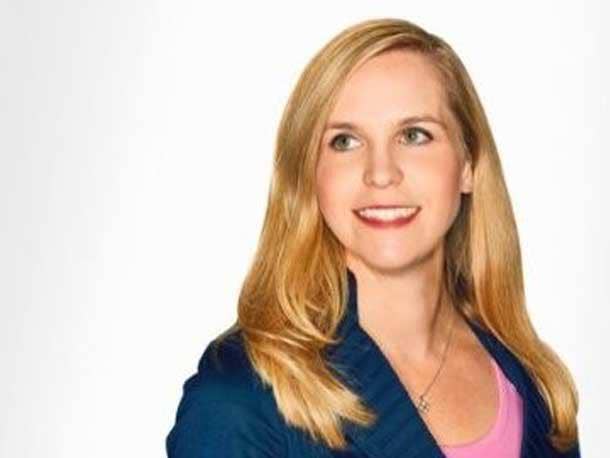
Google Cloud is making a big bid to digitally transform retailers and help them gain efficencies and customer traction using its cloud computing capabilities, and a former Neiman Marcus Group executive is leading the way.
The No. 3 cloud provider’s three-pronged strategy centers on accelerating digital and omnichannel revenue growth for retail and consumer packaged goods (CPG) companies, helping them become more customer-centric and data-driven, and providing solutions that fuel operational improvements.
Retail is a top priority among six industries that Google Cloud has been targeting with specific vertical solutions since CEO Thomas Kurian took over early last year and announced a push to court enterprise customers at Google Next ’19, where retail solutions including e-commerce hosting, real-time inventory management and analytics, Contact Center AI and artificial intelligence-powered product recommendations were unveiled.
“It’s one of our largest and fastest-growing industries,” said Carrie Tharp (pictured), Google Cloud’s vice president of retail and consumer. Tharp joined Google Cloud last August from Dallas luxury retailer Neiman Marcus Group, where she was chief digital and marketing officer across all divisions (Neiman Marcus, Neiman Marcus Last Call, Bergdorf Goodman and Horchow) and, for the last approximately eight months there, interim president of the Neiman Marcus brand.
Google Cloud doesn’t release its retail growth metrics, but recent customer wins include the Etsy e-commerce web site, Lowe’s home improvement chain, online furniture and home goods retailer Wayfair, and John Lewis Partnership, a London-based retail company. Target, The Home Depot, Johnson & Johnson, AB InBev and French supermarket giant Carrefour SA also are among the largest retail and CPG customers that Google Cloud has publicly announced. Others include American Eagle Outfitters, Blue Apron, Colgate-Palmolive, eBay, L.L.Bean, Loblaw Digital, Macy’s, Latin American e-commerce company Mercado Libre, Philips Lighting, Shopify, Staples, Ulta Beauty, Walgreens and Zulily.
“We work with … seven of the top 10 retailers [and CPG companies] and are having rapid growth and success with folks in that customer data platform space and e-commerce hosting,” Tharp said. “Google overall, and then therefore Google Cloud, is seen as a retail innovation partner of choice because we do have those capabilities across Alphabet that can really create something unique and interesting.”
Most retailers, whether directly engaged with Google Cloud or not, have relationships with the broader Google, according to Tharp—through Google Ads, Google Shopping, YouTube and Google Assistant or G Suite, Chrome Enterprise and Android.
“And they're often curious about how to take that partnership to the next level and do some of these more advanced capabilities and AI and machine learning-based solutions that we have to really reshape the retail value chain,” Tharp said. “When you think about the customer and marketing, Google touches really all elements of a customer journey. Wherever we can, [we’re] actually pooling together all those great elements from Google and putting them together in a unique packaged offering for our biggest customers. Google has that ability to interact with retail in a way that’s different than our competitors.”
CRN spoke with Tharp last month about Google Cloud’s retail initiative, including her charge from Kurian and the industry strategy it’s pursuing. She talked about Google Cloud’s retail customer use cases, competition, partner ecosystems and the new Google Search for Retail and how her team is helping retail customers weather the impacts of the coronavirus pandemic.
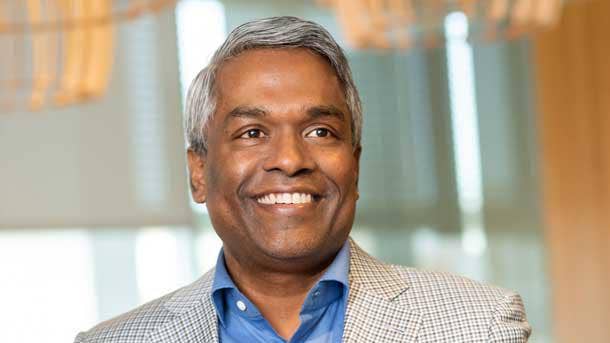
Tharp’s Charge From CEO Kurian
Tharp has a 20-year background in retail, CPG and travel that also includes turns at consumer fashion accessories company Fossil Group, Travelocity and Dean Foods, and one that’s in tune with Google Cloud’s strategy to build retail and CPG solutions aligned with C-suite challenges.
“I joined to come with that experience of P&L [profit and loss] management, customer engagement and innovation in my background to shape the Google strategy around what we were offering to help drive value inside the industry P&L,” she said.
Kurian’s charge to Tharp was to ramp up on Google Cloud’s capabilities so she could merge what it’s currently doing and capable of doing for the industry from a core infrastructure and technology standpoint, establish an industry strategy that prioritizes Google Cloud’s resources against it, and get very close to customers, she said.
Google Cloud has a sales and customer engagement organization that directly owns the retail industry sales quota, and Tharp said she’s heavily engaged with that team.
“I do spend a lot of my time directly with customers, really sharing [what] the core vision and strategy is for retail, working on brainstorming and collaboration on how we can drive value specifically for them as a customer, and then getting them deeply engaged in the products that we're talking about,” Tharp said. “I work closely with our product team to say what are we building, but then I also help make the connections between the customers who are going to get early access to the programs or be a part of the development phase.”
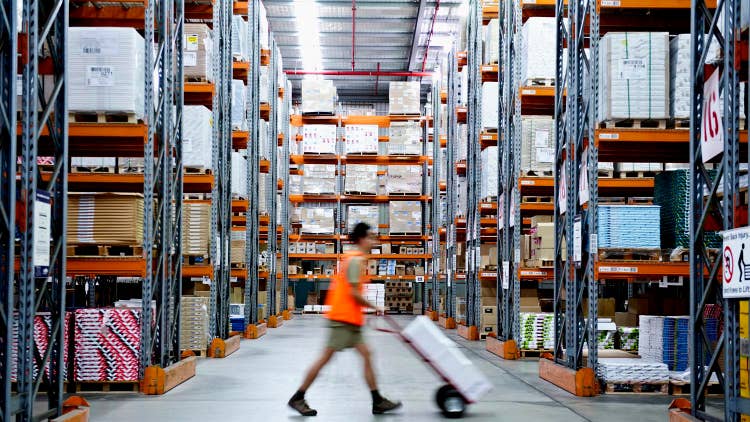
Google Cloud’s Retail Strategy
Google Cloud unveiled its retail strategy at the National Retail Federation’s 2020 Vision: Retail’s Big Show in January.
Kurian also announced new and expanded retail services and solutions at the New York City event, including the pilot of Anthos for Retail, which allows retailers to use Google Cloud’s hybrid and multi-cloud platform to streamline and modernize their store operations, and is expected to roll out more broadly this year.
Google Cloud expanded the availability of its Retail Acceleration Program that helps retailers optimize their websites, build unified views of customer data and drive increased foot traffic, and its “white glove” Customer Reliability Engineering service that helps retailers perform during peak shopping seasons. It also introduced Google Cloud’s new Buy Optimization and Demand Forecasting service and the API Management for Retail solution that allow retailers to easily integrate the systems that power different sales channels, providing a more unified customer shopping experience.
The retail industry has been undergoing a digital transformation, shifting from very traditional in-store selling to digital commerce and engagement, Tharp said, in reference to Google Cloud’s digital and omnichannel focus. Google Cloud is helping customers use its infrastructure capabilities to modernize their e-commerce infrastructures and create omni-channel experiences. That includes a lot of discussion about buying online and picking-up-in-store options, and creating the connection between digital and offline retailing, according to Tharp.
Google Cloud’s core cloud and data platform capabilities, including AI and machine learning, are helping retail and CPG customers become more customer-centric and data-driven to improve everything from ordering and stocking to pricing and promotion optimization, she said.
“A big focus in retail about the store of the future is how do you bring technology into the store, and AI and machine learning is a great example of doing dynamic offers and pricing, and understanding inventory … to just continue to improve that in-store experience,” Tharp said.
Every retailer wants to know their customers better and provide personalized offerings and product recommendations, and that starts with being able to bring together all of their data, according to Tharp.
“It's not just a customer data conversation, but it's really the unique merger of the product data, customer data and supply chain data, and how do you actually use that in real time,” she said. “How do you merge all the different, separate data sources that you're not acting on in real time and start taking action in real time to change the customer experience, to improve margin, etc.”
Google Cloud also offers solutions to help retailers drive operational improvements by taking out any costs that can instead be focused on more value-added customer experiences.
“We have a host of solutions … that help manage the biggest cost-drivers within the retail P&L, so things like helping with labor scheduling in-store, helping supply chain, optimizing fulfillment, optimizing different efforts around pack and ship,” Tharp said.
Google Cloud’s Contact Center AI—its customer service contact solution that’s become increasingly important for retailers amid the coronavirus pandemic—helps handle customer inquiries about issues including order statuses and store hours to free up human time for more complex, high-touch customer problems.
“When you look across the solution offering, there's something in there for all the different members of the retail C-suite—marketing and customer data platform tools for the chief marketing officer, demand forecasting and merchandising tools for the chief merchant, and operational improvement tools both for the CIO to reshape their IT costs [and] the operational stores' IT elements.”
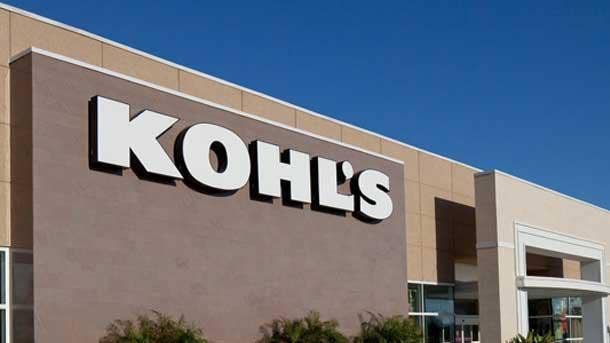
Google Cloud Retail Customer Use Cases
New York-based Etsy, an online marketplace for handcrafted and vintage items, did a wholesale infrastructure migration to Google Cloud.
“What they found as they migrated that infrastructure is they were able to reduce their time spent on core infrastructure and e-commerce hosting and support,” Tharp said, “which we were able to seamlessly take over for them so they could put their engineers on the customer-facing, value-added activities of improving capabilities on their site—things like search capabilities.”
Retail chain Kohl's is using Google Cloud to improve its omnichannel operations, including its focus on customers buying merchandise online and then picking up their orders at its physical stores.
“They needed capabilities to create operational chatbots in the store to really say, how do I pick all these orders, which of my associates should be focused on picking these orders and getting them ready for when the customer is going to be showing up,” Tharp said.
Lowe’s, meanwhile, completely rebuilt its e-commerce platform with a more microservices-based architecture to “set them up for their innovation roadmap going forward,” according to Tharp. And Carrefour used Google Cloud to put localized product assortments in their stores, based on the specific locations’ customer profiles.
“The solutions we're building are … very relevant whether you're in grocery or luxury apparel or more the mass merchandising space,” Tharp said.
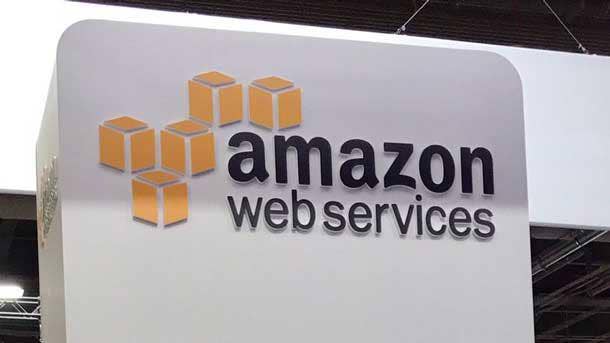
The Competition
Google Cloud’s edge with customers could come from those leery of partnering with No. 1-ranked Amazon Web Services on retail deals because of the competitive might of sister company Amazon.com, the e-commerce powerhouse.
“From my broader, previous industry experience, there was a thought of wanting to work with a partner that's focused on a healthy retail ecosystem,” Tharp said.
“When you talk to Google as a partner across all of our offerings—whether it's the ad and search side of the house, our shopping capabilities, etc.—we're very focused on the … retail ecosystem. So we see a lot of success with our partners in having that customer and product data in a Google Cloud-based environment because they're most comfortable with having their data with a partner that's focused on supporting the industry holistically.”
Google Cloud offered up Lush, a Poole, England-based cosmetics retailer, as an example of a customer that moved from AWS to Google Cloud, albeit in 2016. After Lush’s website crashed on the day after Christmas for two years running while handling up to 12 transactions per second or three times its scaled-for capacity, Lush migrated its entire global infrastructure, including its e-commerce systems, mobile apps and retail systems, to Google Cloud over 22 days.

Google Cloud’s Retail Partner Ecosystems
Google Cloud is focused on building a very robust independent software vendor (ISV) ecosystem to help service its retail customers, according to Tharp.
“The martech [marketing technology] stack and the e-com stack and the overall retail tech stack is a very … crowded space, and we've been bringing over quite a lot of those ISVs to GCP [Google Cloud Platform],” she said. “They actually run their platforms on GCP versus other competitors based on the infrastructure capabilities we have, but also this connection to the Google AI and ML, and the capabilities we're building out.”
Those ISVs include New York retail marketing and personalization software provider Bluecore and Boston-based TrueFit, a data-driven personalization platform for footwear and clothing.
“It allows us to have extensions of our own capabilities,” Tharp said. “Where our road map doesn't cover a specific capability for retail, or there's kind of a unique offering, it allows us to give the most relevant retail offering to our customers.”
Google Cloud also has a much larger partner ecosystem of providers whose platforms operate inside retailers, including core e-commerce platforms, store point-of-sale platforms—anything a retailer needs to run their tech stack, according to Tharp. They include Dallas’ o9 Solutions for merchandise planning and Wokingham, England-based Manhattan Associates from an e-commerce platform standpoint.
“The wrap-around to all of that is our global system integrators,” Tharp said. “They're a big part in making a lot of this happen. In many cases, you're stitching together several solutions across an ISV and Google Cloud, and so players like Deloitte and Sapient … do quite a bit of work in the retail space … and we find ourselves collaborating [on] solutions and integrations.”
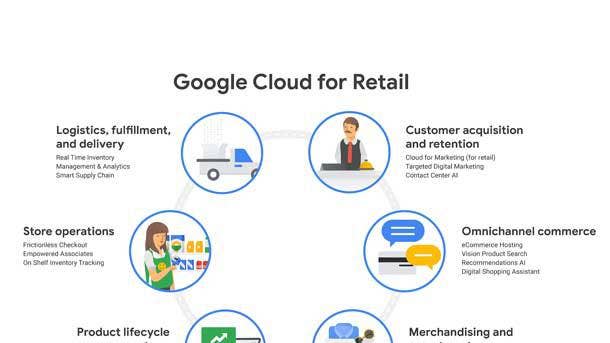
Google Cloud Search For Retail
Google Cloud is piloting a new tool for retailers that capitalizes on one of the broader Google’s biggest strengths.
Google Cloud Search for Retail, which is powered by Google Search and incorporates Google’s AI technologies, is designed to produce better product search results for retailers’ websites and mobile applications. It’s in development with some of Google Cloud’s larger retail customers under an early access program and is expected to be rolled out more broadly early next year.
“It seems very intuitive when you think about it—bringing the power and capability of all of the AI and machine learning that drive Google Search to a retailer's website,” Tharp said. “People have become accustomed to very relevant results when they use Google Search. It has natural language understanding, it understands the intent of your search, and applying that to retail has huge upside. If you go to a lot of multi-brand, multi-category-type of wholesale/retail environments, their search is sufficient—you can get to where you need to go— but it's not necessarily that really, truly understanding level of what the customer is looking for.”
Customers are excited about Google Cloud Search for Retail because it's the first step in the cloud provider’s product discovery solution area to help retailers reshape and improve online product searches, Tharp said.
“Today, frankly, if you go to a big website, if you're mission-driven and you know exactly what you're looking for, you're probably going to be able to get to it,” Tharp said. “But really, if you think of discovery and how it happens in-store, and you explore different products and categories as you walk by, it's not as easy online. It's a much more of a journey that you have to kind of step your way through. We're really focused on how we help transform that.”